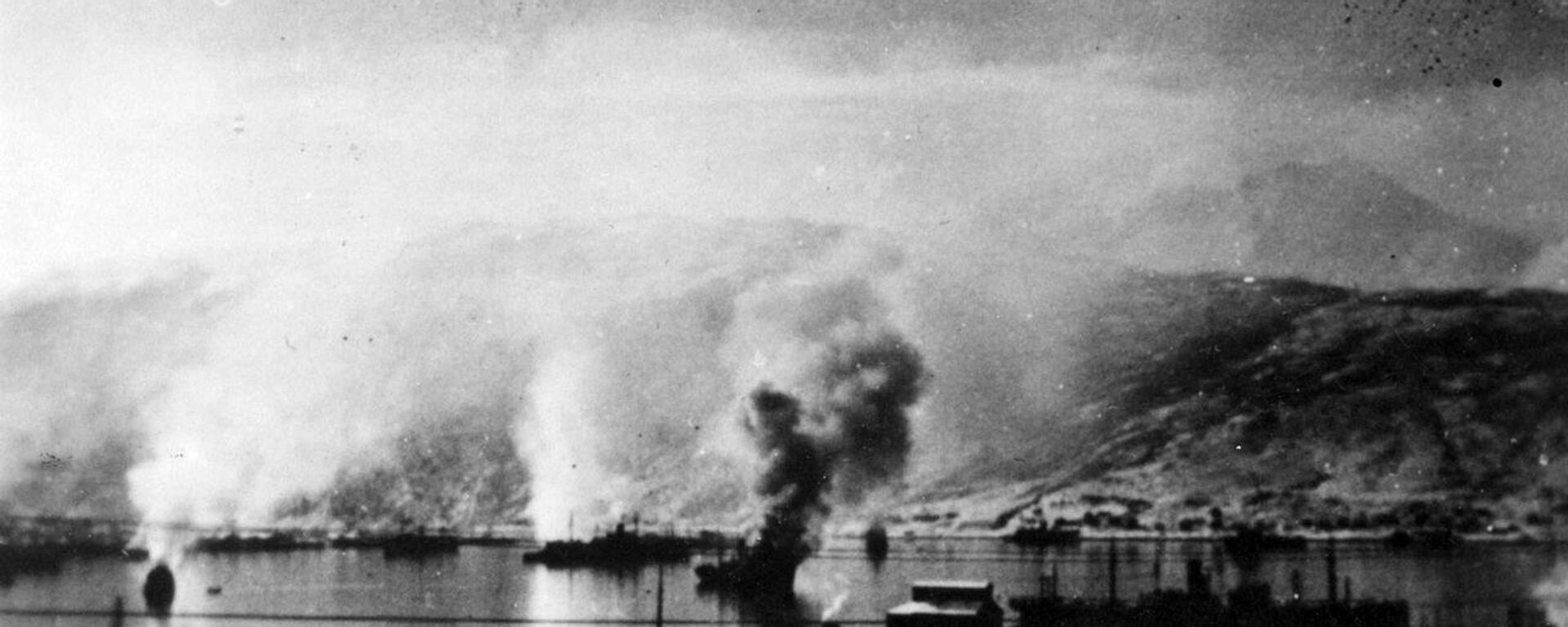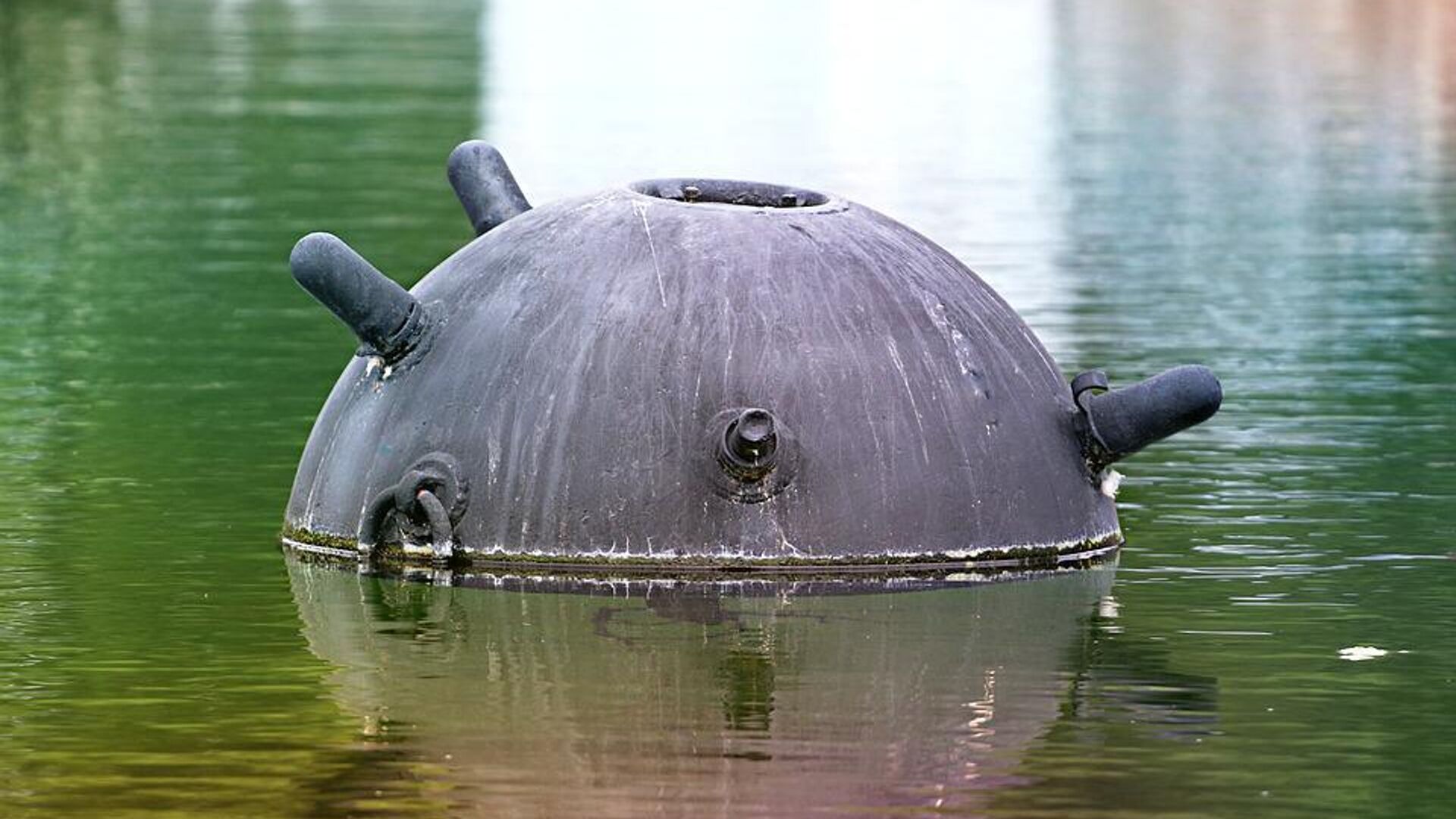https://sputnikglobe.com/20220526/wwii-mine-line-found-near-swedens-coast-1095785755.html
WWII Mine Line Found Near Sweden's Coast
WWII Mine Line Found Near Sweden's Coast
Sputnik International
A total of 175,000 mines were dropped in the Baltic Sea and the North Sea during the two world wars by all the belligerents. About 50,000 of them remain, left... 26.05.2022, Sputnik International
2022-05-26T06:41+0000
2022-05-26T06:41+0000
2022-05-26T06:57+0000
scandinavia
newsfeed
world war ii
wwii
sweden
baltic sea
https://cdn1.img.sputnikglobe.com/img/07e6/05/1a/1095786430_0:73:960:613_1920x0_80_0_0_8656a857e2d55836ab8787ba45a8d14f.jpg
A World War II mine line consisting of 26 mines has been identified on the West Coast of Sweden near the Vinga lighthouse.The mine line was discovered by the mine countermeasures vessel HMS Spårö during a sea surveillance mission.The mine line was known from before, but its exact position could not be determined until now, the Swedish Armed Forces said.The mines, which are British mines of the type MK16 dropped in 1940, are not dangerous in their current position, the Swedish Navy said. However, risks cannot be ruled out in connection with trawling, diving and underwater work. As of now, the Navy is working on a plan for how the mines will be handled.“After the wars, extensive minesweeping work was carried out, but at that time they lacked the advanced equipment we have today, and everything wasn't rendered fully harmless to the extent we can today. Nowadays, we can search areas with sonar and neutralise them with divers and submarines”, Carl Lundvall concluded.Mining is an effective method used in war to restrict an enemy's access to key fairways or port areas. According to the Swedish Navy, a total of 175,000 mines were dropped in the Baltic Sea and the North Sea during the two world wars. About 50,000 remain, and the European navies are still actively working to locate and identify them.
https://sputnikglobe.com/20220218/norway-finds-over-20-misplaced-wwii-bombs-in-shallow-waters-1093131688.html
scandinavia
sweden
baltic sea
Sputnik International
feedback@sputniknews.com
+74956456601
MIA „Rosiya Segodnya“
2022
News
en_EN
Sputnik International
feedback@sputniknews.com
+74956456601
MIA „Rosiya Segodnya“
Sputnik International
feedback@sputniknews.com
+74956456601
MIA „Rosiya Segodnya“
scandinavia, newsfeed, world war ii, wwii, sweden, baltic sea
scandinavia, newsfeed, world war ii, wwii, sweden, baltic sea
WWII Mine Line Found Near Sweden's Coast
06:41 GMT 26.05.2022 (Updated: 06:57 GMT 26.05.2022) A total of 175,000 mines were dropped in the Baltic Sea and the North Sea during the two world wars by all the belligerents. About 50,000 of them remain, left to be discovered and neutralised.
A World War II mine line consisting of 26 mines has been identified on the West Coast of Sweden near the Vinga lighthouse.
The mine line was discovered by the mine countermeasures vessel HMS Spårö during a sea surveillance mission.
The mine line was known from before, but its exact position could not be determined until now, the Swedish Armed Forces said.
“We had a maritime surveillance unit in the area, so it was a good idea to investigate this particular site to ensure that the mines are not located in any of the anchorage areas. We can state that the mines fortunately aren't and there is no direct danger to the public as long as they remain untouched”, Carl Lundvall, the head of the 42nd mine clearance division at the Fourth Navy Squadron,
said in a statement.
The mines, which are British mines of the type MK16 dropped in 1940, are not dangerous in their current position, the Swedish Navy said. However, risks cannot be ruled out in connection with trawling, diving and underwater work. As of now, the Navy is working on a plan for how the mines will be handled.
“After the wars, extensive minesweeping work was carried out, but at that time they lacked the advanced equipment we have today, and everything wasn't rendered fully harmless to the extent we can today. Nowadays, we can search areas with sonar and neutralise them with divers and submarines”, Carl Lundvall concluded.

18 February 2022, 06:17 GMT
Mining is an effective method used in war to restrict an enemy's access to key fairways or port areas. According to the Swedish Navy, a total of 175,000 mines were dropped in the Baltic Sea and the North Sea during the two world wars. About 50,000 remain, and the European navies are still actively working to locate and identify them.




